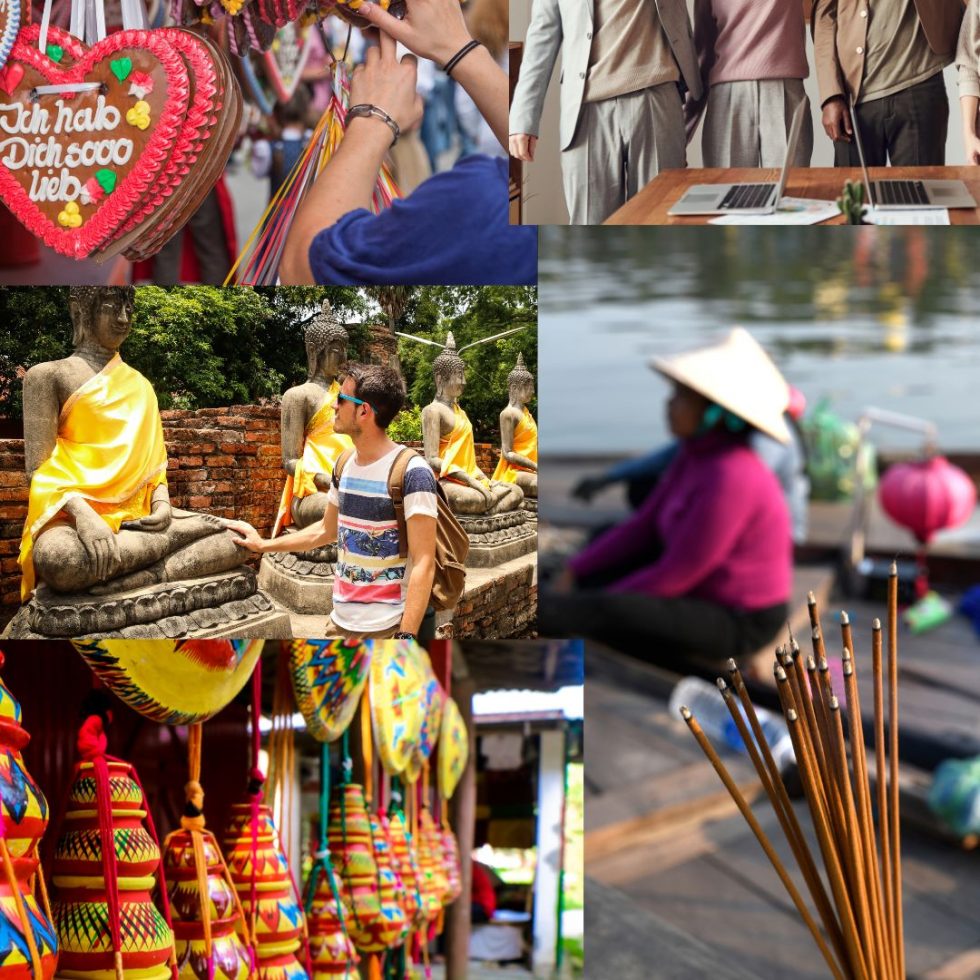
India boasts a diverse range of attractions that highlight its rich cultural past. Because of its plethora of stunning heritage structures, India attracts tourists from all over the world.
People have visited historic temples, regal palaces, stunning beaches, and beautiful hills as a result of cultural tourism in India.
Present scenario of the tourism sector in India
With 1.52 million foreign visitors expected in 2021, India is one of the world’s top tourism destinations. As a result, India’s foreign exchange income climbed by around $8.8 billion. There were around 680 million domestic travellers as well.
India is a popular tourist destination due to its distinct culture, history, and status as one of the world’s oldest civilizations, as well as its abundance of spectacular natural wonders. As a result, 40 UNESCO world heritage sites have been designated (32 cultural, 7 natural, and 1 mixed). India has a lot to offer travellers in terms of towns, forts, tombs, tunnels, rock shelters, and cathedrals.
What is Cultural tourism?
Cultural tourism is a type of tourism in which visitors can participate in local cultural celebrations such as festivals and traditions. As a result, the traveller can have actual cultural contact with the locals.
Furthermore, because cultural tourism is an essential component of growth, it allows local societies to embrace their culture. As a result, communities make a point of promoting and supporting their culture since it distinguishes them from other communities.
As nations acknowledge the significance of cultural tourism and how it can benefit local economies, they are focusing on constructing cities and villages that will entice tourists from all over the world to experience and observe culture in unprecedented ways.
Why is Cultural tourism significant in India?
- Tourists travel to India to experience the country’s well-known rich cultural tradition and mystique for themselves.
- Some of the world’s most prominent civilizations and faiths had their roots and were fostered in India. Because of its numerous World Heritage Sites and incomparable cultural vibrancy, India is a popular tourism destination.
- India has been recognised as the land of ancient history, tradition, and culture since time immemorial, which is the primary cause for its current meteoric rise in the tourism sector.
- India has had several monarchs over the years, and each of them had an impact on Indian culture. Dance, music, celebrations, architecture, traditional practices, food, and languages have all been influenced by different civilizations.
- The influence of all these distinct cultures can be credited to the richness and diversity of India’s heritage and culture. This cultural wealth serves to position India as the top destination for cultural tourism, hence increasing the Indian tourist industry.
- The Indian government formed the Ministry of Tourism and Culture to encourage cultural tourism in India. The ministry recently launched the “Incredible India!” campaign, which has helped India’s cultural tourism business grow.
Various sites of cultural tourism centers in India
The variety of India stems from the country’s combination of religious and cultural traditions. The country is home to a great number of world-historic monuments with captivating influences that have long drawn people from all over the world. We would love to learn about the various practices and civilizations that make up India’s cultural legacy.
Pushkar Fair (Rajasthan), Taj Mahotsav (Uttar Pradesh), and Suraj Kund Mela are just a handful of the fairs and festivals that visitors to India (Haryana) can attend. The Taj Mahal (Uttar Pradesh), Hawa Mahal (Uttar Pradesh), Hampi (Karnataka), Ajanta & Ellora caves (Maharashtra), and Mahabalipuram (Tamil Nadu) (Rajasthan) are among the sites.
Among the several Indian states, Rajasthan is the most popular for cultural tourism. Rajasthan is known for its rich cultural heritage, which is why this is the case. Rajasthan is well-known for its numerous magnificent palaces and forts, which showcase the state’s rich cultural past. The diverse folk songs and music represent Rajasthan’s rich cultural past. Rajasthan is home to numerous festivals and fairs, such as the camel festival, the Marwar festival, and the Pushkar festival. All of these lures a lot of tourists to Rajasthan since they allow them to experience the colourful culture of the state.
Tamil Nadu is well-known for cultural tourism in India since it showcases Dravidian customs and culture. Its many temples showcase India’s diverse cultural past. Uttar Pradesh’s numerous tourist attractions attest to the state’s rich cultural past. The most well-known structure is the Taj Mahal in Agra. Many tourists visit Uttar Pradesh destinations such as Varanasi, Allahabad, Vrindavan, and Ayodhya because they depict lovely Indian scenery.
Uttaranchal is well-known in India for its cultural tourist business. This is where the Himalayas, often known as the “abode of the Gods,” may be found. Numerous historic temples can be found in the state’s Kumaon and Garhwal districts.
Conclusion
In conclusion, India’s thriving cultural tourism industry attracts visitors from all over the world. With its diverse range of attractions, including historic monuments, temples, festivals, and natural wonders, India offers a rich and captivating cultural experience. Rajasthan, Tamil Nadu, Uttar Pradesh, and Uttarakhand are among the popular states for cultural tourism, showcasing the country’s vibrant heritage. The government’s initiatives, such as the successful “Incredible India!” campaign, have played a significant role in promoting cultural tourism and its economic benefits, including job creation and community development. The combination of India’s cultural wealth and warm hospitality continues to allure and fascinate travelers, making it a top destination for those seeking an immersive cultural experience.









